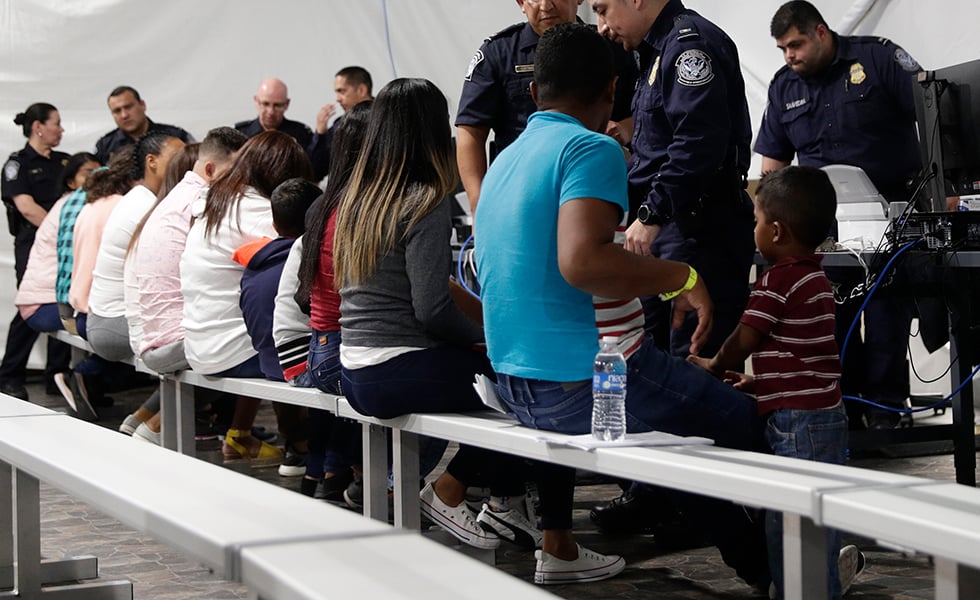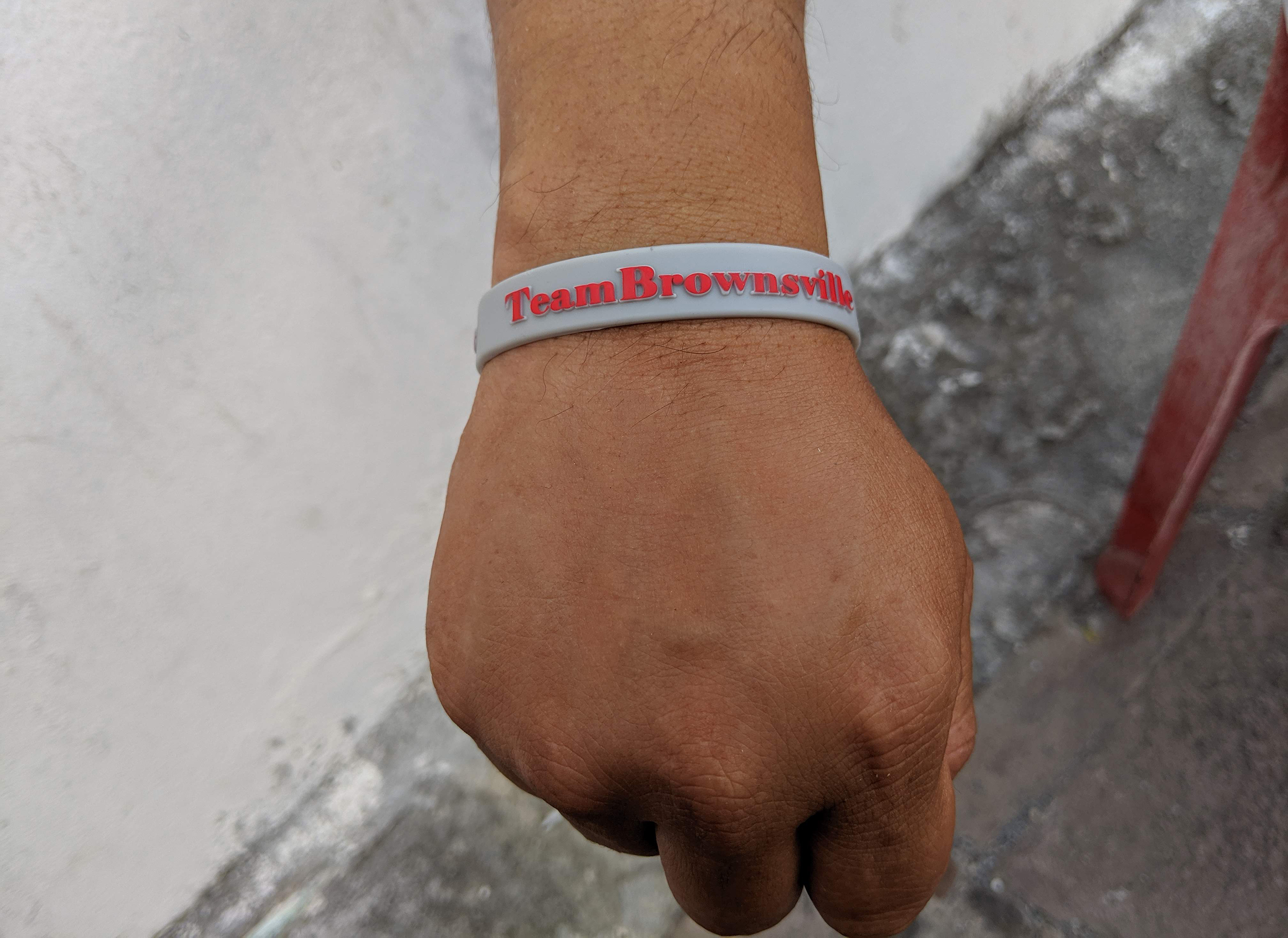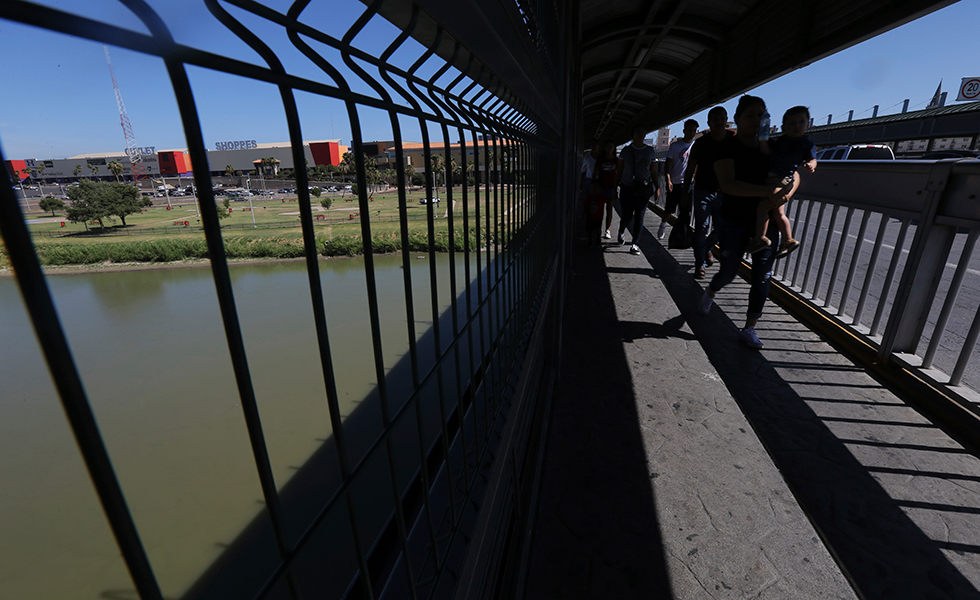
Attacked in Mexico, Returned to Mexico: Trump Policy Ignores Danger to Asylum-Seekers
The Migrant Protection Protocols are failing to protect migrants from imminent kidnapping and violence.

Under the Migrant Protection Protocols (MPP), the Trump administration has returned more than 48,000 asylum-seekers since January to await their court dates in Mexico, a country where kidnapping and assault of migrants is rampant. Over the course of two months, the Observer has uncovered multiple stories showing that the program includes no meaningful screening for even the most obvious threats to migrants’ safety and lives.
Mario Rodríguez, a 27-year-old from Nicaragua, was in the southern Mexican state of Chiapas in May when he was attacked the first time. According to a police report, he was knocked unconscious and robbed of $70 by an unknown assailant. He experienced a second attack in late July, when he was in Matamoros, a Mexican border city across from Brownsville, waiting his turn to request asylum legally at the bridge under the Trump policy known as “metering.” One evening, Rodríguez—who, like the other migrants in this story, requested a pseudonym for his protection—walked downtown to buy some churros. Night fell, so he decided to take a taxi back to the bridge, where he lived in a migrant encampment.
By Rodríguez’s account, the taxi driver recognized him as a foreigner, pulled a crescent wrench from the floorboard, and slammed him over the head three times in an attempt to knock him unconscious. The driver grabbed Rodríguez’s cell phone and said he was going to turn him over to the local Gulf Cartel. Rodríguez, an ex-cop, says he fought back, wresting away the wrench and fleeing to the bridge on foot, blood pouring down his face. He reached the bridge’s midpoint, where Customs and Border Protection (CBP) officials stand guard, and begged to be let through. But, he says, the agents just confiscated the bloody wrench from him and turned him away. About two weeks later, it was his turn to request asylum at the bridge. Though he told a CBP officer he was afraid of Mexico, the agent said nothing could be done, and Rodríguez was returned to Matamoros under MPP. Now he rarely leaves the area right by the bridge. “I feel a fear here,” he told me in August. “I have this premonition that something’s going to happen to me.”

Eduardo Águila, a 33-year-old also from Nicaragua, has had it even worse. According to police reports he filed with Mexican authorities, a man stabbed him in his right side in March in Chiapas; four months later, in Mexico City, two men kidnapped him, tied his hands with a cable, beat him, and burned him in an attempt to extort ransom. He then managed to escape the kidnappers and flee to Tijuana. There, a group of men began chasing him and one slashed his right arm with a knife. Running for his life, Águila climbed the border wall and turned himself in to Border Patrol agents, who took him to a hospital in nearby Chula Vista. Later, he tried to explain to the agents what had happened, but, he says, they wouldn’t listen. They put him in MPP and returned him to Tijuana, with fresh stitches in his arm and medical paperwork that says he “sustained laceration to right elbow during entry.” Now he lives in a shelter that he almost never leaves. He’s already overstayed his allotted time there and will likely be kicked out soon.
Cases like these, where the U.S. government returns refugees into the hands of their attackers before the blood is even dry, are why critics of MPP call the policy a “farce” or a “sham.”
In theory, there’s a mechanism to keep vulnerable migrants out of MPP. After first turning themselves in to CBP agents, if asylum-seekers state—without being asked—that they fear returning to Mexico, they’re supposed to meet with an asylum officer from Citizenship and Immigration Services (CIS), another agency within the Department of Homeland Security (DHS). The officer must determine through an interview whether migrants are “more likely than not” to face severe harm in Mexico, and, generally, that the threat is based on race, nationality, or another protected category. If the officer decides they do, then migrants can be detained or released in the United States to await their court hearings.
But in practice, this process is failing at every stage to protect even those who face obvious threats specifically due to their status as migrants. Many who turn themselves in to CBP and express fear of returning to Mexico, including Rodríguez and Águila, aren’t actually getting interviews. Taylor Levy, an El Paso attorney who’s been working with returned migrants in Juárez for the past six months, said she’s never met a migrant who got an assessment when they first turned themselves over.
Cases like these, where the U.S. government returns refugees into the hands of their attackers before the blood is even dry, are why critics of MPP call the policy a “farce” or a “sham.”
Once back in Mexico, migrants should be able to return to a port of entry at any time to request an interview again, but Levy said that’s not working either. “If you go without a lawyer or a Congressperson, you’re just going to get laughed at basically,” she said. In fact, most migrants only get a CIS interview months after they’ve been returned to Mexico, at their first immigration court hearings, which are held just across the border in U.S. territory. There, they must generally express fear without being asked, after which the judge will refer them to CIS.
Regardless of when they get an interview, the overwhelming majority of migrants are denied and returned to Mexico anyway: Levy estimated that less than 5 percent succeed. Águila, the Nicaraguan attacked three times in Mexico, has copies of police reports for every incident, but when he finally got an interview after his first court date in early September, he spoke to an officer through an interpreter by phone and was not even able to present the evidence. He was returned to Tijuana again.
In El Paso and San Diego, attorneys and migrants report, the CIS assessments have usually been multiple hours long. But in Laredo and Brownsville—where MPP expanded in July and DHS has erected tent courts that journalists and the public may not enter—the interview process appears to have become truncated. Jodi Goodwin, the primary attorney working with migrants in MPP in Matamoros, told me that assessments after court hearings are taking 10 minutes or less and consist only of yes-or-no questions.
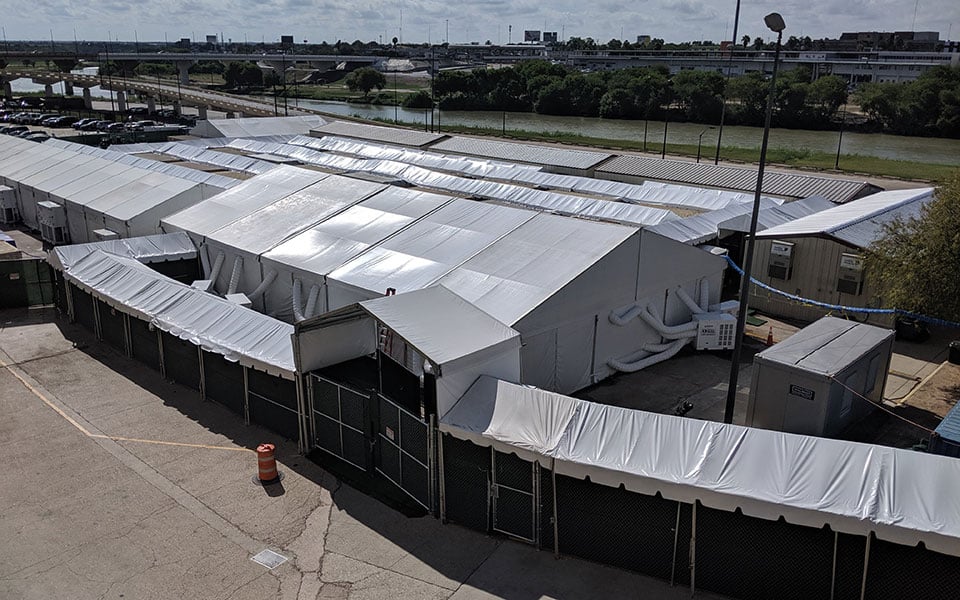
In mid-September, I went to the San Antonio immigration court, where judges hear cases from the Laredo tent facility by video and where journalists are allowed to observe the proceedings. It was the first court date for Antonia Cepeda, a Honduran mother I had been in touch with since July when she was returned to Nuevo Laredo with her teenage daughter. During her hearing, Cepeda said she was afraid to return to Mexico, as did about a dozen others, some of whom said they’d been kidnapped. After the hearing, Cepeda said, she was then moved to a different tent, where she got a 15-minute phone interview consisting of yes-or-no questions before she and all the others were rushed back into Nuevo Laredo—a profoundly dangerous city for migrants.
“You can’t express yourself,” Cepeda told me by phone once she was back in Mexico. “They don’t see your face or anything so they don’t believe you at all.” Five days after her hearing, Cepeda called me, panicked, to say the lady she had been staying with in Nuevo Laredo—a good Samaritan who was letting a handful of migrants stay with her—had been threatened by cartel members and was now kicking everyone out.
It’s not uncommon for migrants in MPP to be kidnapped within hours of being returned to Mexico. As Levy, the El Paso lawyer, put it: “Everybody knows where they’re released, what time they’re released, so they’re just snatched off the street.” Denise Gilman, director of the University of Texas at Austin’s immigration clinic, told me she also knows of at least two cases in which migrants were unable to attend their court hearings in Laredo because they were being held for ransom at the time.
“There’s absolutely no meaningful screening for danger in Mexico,” said Levy. “Instead, we’re handing people on a silver platter to the cartels.”
The legal basis for MPP stems from a rarely used 1996 statute that allows the government to return some migrants to Mexico or Canada. The Trump administration’s decision to apply the law to asylum-seekers was unprecedented, and shortly after MPP rolled out in January, civil rights organizations went to court to argue the new interpretation was illegal. In April, a federal judge in California agreed and blocked the program, but in May the Ninth Circuit Court of Appeals overruled that decision, siding with Trump and unleashing MPP across the border. The Ninth Circuit will evaluate MPP again on October 1.
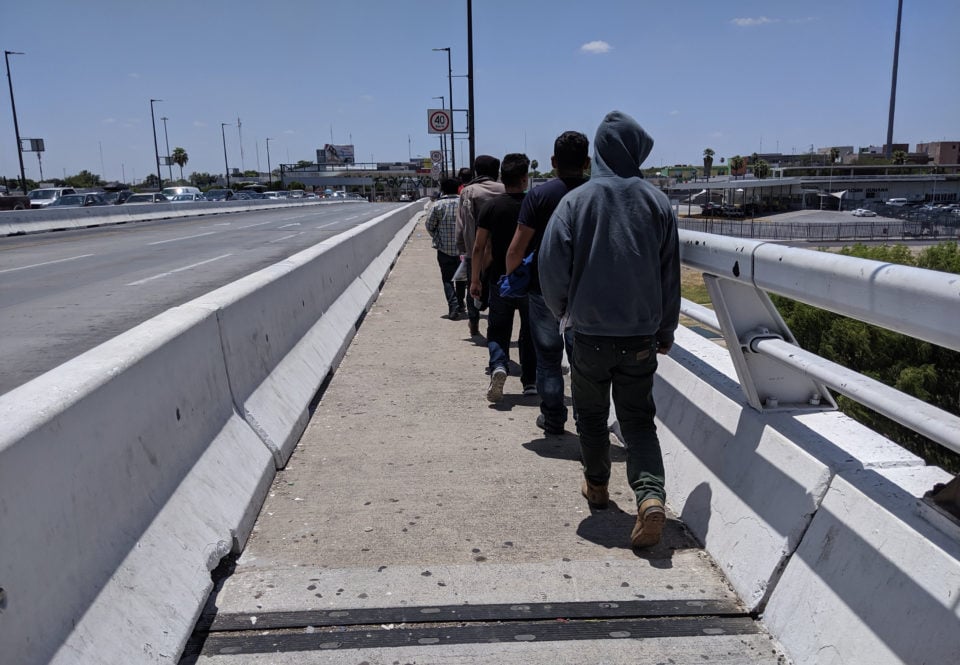
The argument over the statute is hermeneutic, hinging on different readings of an ambiguous text. But irrespective of how that debate resolves, the government must also abide by its obligations under domestic and international law to not return refugees into the maw of danger. Then-DHS Secretary Kirstjen Nielsen said so herself in a January MPP guidance memo. In court, the government has argued that it meets those obligations by “permitting an alien to claim a fear of return to Mexico at any time, providing for a private assessment interview.” But the government is not living up to that promise, as the cases of Rodríguez and Águila and countless others show.
Legal or not, MPP has shredded the American asylum system. Thousands of migrants have given up on their legal claims and returned home. During two rounds of MPP hearings I observed in San Antonio this month, only about 40 percent of migrants made it to their initial court dates. Court data compiled by Syracuse University show that less than 2 percent of migrants in MPP have found lawyers to represent them, and only two migrants in the program have won asylum as of August 31.
Nicole Ramos, an attorney who works in Tijuana for the nonprofit Al Otro Lado, summed up MPP bluntly. “DHS set up an illegal system designed to create a body count so we have less people coming,” she said. If people die in MPP, in other words, it will deter further migration. DHS did not respond to a request for comment for this story.
“There’s absolutely no meaningful screening for danger in Mexico. Instead, we’re handing people on a silver platter to the cartels.
What looks like travesty to migrant advocates might look like success to Trump. The president has long claimed that migrants are making “fake” asylum claims with the help of scheming immigration lawyers. But MPP is a gallingly blunt instrument for assessing the strength of a legal case, let alone the suffering a human being has endured.
Take the cases of Rodríguez and Águila. Both participated in protests last year against Nicaragua’s leftist-cum-dictator Daniel Ortega. In a violent and brutal repression, hundreds of Nicaraguans have been killed, while others have been thrown in prison with years-long sentences. Tens of thousands have fled the country. Both men were beaten and received threats from state or paramilitary forces, and they have evidence to prove it. They both likely have viable asylum claims—yet even they might give up.
I first met Rodríguez in August, near the Gateway International Bridge in Matamoros. Stocky with a five o’clock shadow and scars from the attacks visible on his face, he’d just been returned under MPP a few days prior and was feeling desperate. Though he’d later decide against it, he told me then that he was thinking of returning to Nicaragua. His reasoning? He’d heard it costs thousands of dollars to repatriate a body.
Cheaper to die at home, he calculated, than to die in Mexico.
Read more from the Observer:
-
Who Is John Cornyn Serving?: The senior senator from Texas has mastered the art of political subservience, making him very powerful—and perhaps vulnerable.
-
A Joyful El Paso Art Exhibit Imagines a World Ruled by Latinx People: From a cosmic piñata to “Aztechnonauts,” sculptor Angel Cabrales envisions an alternate history defined by Latinx creativity.
-
Anti-LGBTQ Activist Tracy Shannon Shuts Down Drag Queen Story Times Across Texas: “They made it look like we were planning a peep show for kids. It would have just been a grandma dressing up and reading to kids on her time off.”


